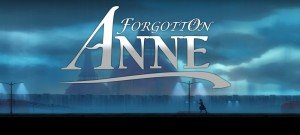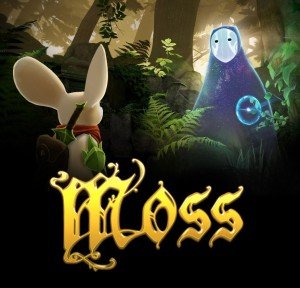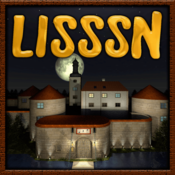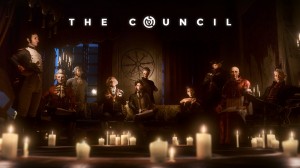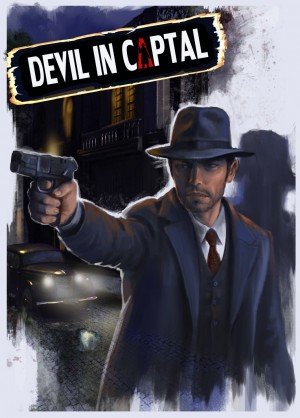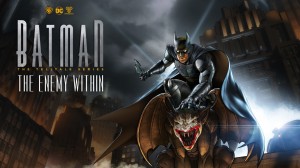Review for Forgotton Anne page t
Ever had one of your socks go missing in the laundry? Or a scarf? Or a favourite blanket? Or a refrigerator? OK, that last one’s probably not so common, but it does happen in ThroughLine Games’s Forgotton Anne. This cinematic, beautifully hand-painted side-scrolling adventure answers the question of what happens to those lost objects: they fall from the Ether – the human world – into the land of forgotten things where they are imbued with anima, a sort of soul energy that brings them to life. It is in this fantastical land that a young woman named Anne lives, works, and hopes to someday return home to the Ether. In her efforts to maintain order, which proves to involve far more thought than dexterity, Anne finds her beliefs, loyalties, and friendships tested along the way, and it’s the player’s role to make hard decisions on her behalf. It is this investment in the shape of the protagonist’s character that makes this a particularly captivating game.
First, let’s deal with the elephant in the room. Yes, Forgotton Anne has platformer elements. As you explore its intricately detailed environments, you will have to jump across gaps or have Anne leap up and down to floors of different heights. However, in almost all instances there is no pressure to accomplish this, as you are free to adjust Anne’s position before jumping without constraint. Missing a landing never results in dying (in fact, you can’t die at all in this game). Instead, Anne merely falls to a lower level and you may have to spend a few moments working your way back up. I can literally count on the fingers of one hand the number of jumps where precision is needed or there is some time component, such as when leaping onto or off of a moving platform. So while you must jump and climb to progress, make no mistake, the main interactive focus lies in dialogs with characters, solving puzzles, and exploring the environment in general. Some may disagree, but I consider this an adventure game with platforming elements rather than a platformer with adventure elements. This ain’t no Super Mario Bros.
After a fully animated introduction showing the passage of a sock between worlds, the story proper begins when the eponymous heroine is woken by a distant explosion and finds the power in her apartment has been knocked out. Anne is the Enforcer of the forgotten lands, meaning she acts as judge, jury and (if necessary) executioner over forgotlings – those lost items that have gained sentience. Anne is the ward of Master Bonku, an aged clockmaker who has been working for years to create the Ether Bridge, a portal that will allow himself, Anne, and the forgotlings to return to the human world. However, not all forgotlings want this and a rebel faction has grown increasingly militant. With the power down, a forgotling rebel manages to sneak inside Anne’s apartment to confront her. Rebel he may be, but intimidating he is not, as he’s nothing more than a cowardly red scarf. Even so, he serves as the initial forgotling you encounter and provides the first of many choices that helps shape Anne on her journey.
Anne possesses the Arca, a mystical glove that allows her to manipulate anima, the energy that powers all things in the forgotten lands. The Arca can distill anima from powered equipment, batteries, or even forgotlings. A forgotling without anima becomes an inanimate object once more, and anima cannot be re-instilled, meaning the drained forgotling is dead for all intents and purposes. The scarf is the first rebel you will have to deal with and he threatens you with a fireplace coal shovel, so it’s up to you to decide if you want to try to talk him down, threaten him with partial distilment, or be the cold Enforcer that the game initially sets Anne up as and go for full measures. While overall the course of the story is linear, how you choose to interact with forgotlings like this is remembered and reiterated throughout the game. This is handled well, with mentions of your past actions emerging naturally as the story progresses.
Having dealt with the scarf, your next task is to guide Anne outside the tower and towards the power plant to investigate the explosion and rebel actions. Along the way and throughout Anne’s entire adventure, you’ll meet a wide assortment of well-characterized and intriguing forgotlings. From Chief Inspector Magnum, an overzealous cop/gun; to Quill, a feather pen forger creating fake passes for the Ether Bridge; to Malone, a forgotten refrigerator-turned-bartender, you’ll find that forgotlings come in all shapes, sizes, and temperaments. The most prominently featured forgotling you’ll encounter several times is Fig, a shop mannequin who is joyful in the face of adversity and has a flair for the theatrical.
When talking to most forgotlings, you will be given several decision spots where you select from two choices of what to say. For many of these dialogs, you can have Anne be a compassionate person or you can have her be the strict Enforcer. After speaking with a forgotling, a brief summary of the conversation and Anne’s thoughts on it is recorded in her in-game journal. Although this does provide some insight into the protagonist, I found that the tone of the journal entries early on had a tendency to not match that of my choices. On my first playthrough, I dedicated myself to the compassionate route. It therefore made me rather uncomfortable reading journal entries that were clearly condescending and prejudiced against the forgotlings. So much so, in fact, that I wished I’d skipped them as there was nothing really critical story-wise in them and I found they made it very hard to empathize with Anne at first, which caused me to struggle in pushing on at one point. However, I’m glad I did because as Anne’s worldview increased, the journal entries settled down and much more closely matched the type of character being expressed through the choices I was making.
And there are some tough decisions to make here. As Anne investigates the world of the forgotlings and particularly when she comes in contact with the rebels, she finds that things aren’t always as black and white as she first thought. She’s exposed to cruelty and fear hiding in the shadows of her world, but also to hope and self-sacrifice among the forgotlings she meets. Through Anne, you’ll have the ability to choose who to trust, who to turn your back on, and how far you’re willing to go in the pursuit of your Enforcer duties. The writing is well done, and I found many of the choices felt personally meaningful, making them all the more compelling. By the end of the game, I’d really come to care for Anne and what she was going through.
The forgotten lands are beautifully rendered with multi-layered, hand-painted backgrounds that work in a pseudo-3D fashion. While each layer is its own stage that Anne can run around on, you’ll find bridges, stairways and doors that allow you to move “forward” or “backward” through the layers. This is used to good effect when you take your investigation to the streets, as it gives you a real chance to explore. You’ll also make your way into the dark underbelly of the city where ravenous lost pieces run wild, an anima bar where forgotlings go to drown their sorrows, the shanty town of the rebel camp, a great industrial complex, and the gear-festooned tower of Master Bonku. Impressively, despite the size of these areas, I never encountered a load screen, with one transitioning smoothly into another by the simple expedient of walking through doorways that switch scenes.
Throughout the game there are several areas that you can bypass entirely or snoop around in to gain a greater understanding of the backstory. For example, one apartment building that you could just as easily go right on by has an old friend of Anne living in it, a camera who used to take family portraits of Anne and Master Bonku. If you stop off here you can get a new picture of Anne, which is recorded in her journal as a collectible item. Various other collectibles dot the landscapes and add an extra challenge for completionists.
Maintaining the personally crafted feel of the environments, Anne, Master Bonku and all of the forgotlings are all hand-animated in a delightful anime style. Each character is smoothly animated and drawn to reflect their characterizations. Anne can stand in defiance, look bewildered at what she’s seeing, or fight back emotion in some truly moving scenes. Fig stands with his head thrown back and his stance wide in a posture of utter confidence. Fig’s co-rebel leader (a bulb) is hunched over in a dark cloak with a top hat pulled low over his face, hiding his intentions. Anne’s aged blanket moves with an almost arthritic sway, showing the accumulated years of her life. In key situations the game switches to close-up views of the characters, allowing them to express even more emotion.
Of course, Anne’s journey isn’t as simple as chatting with a few forgotlings and wandering the city streets. Various puzzles serve as obstacles in her path. For the most part these require manipulating switches and levers to direct anima to the likes of mechanical doors, lights and bridges in order to open up new paths. In many cases it’s not as simple as it sounds, though. Machines that Anne can directly affect are connected by conduits to the objects that Anne’s trying to affect, but usually Anne has to go into a sort of “Arca vision” to manipulate the conduits themselves.
When using the Arca, the screen transitions to a dark, wavery blue overlay of the current view. Here, anything that can be powered by anima is brightly outlined, while anything that is currently charged with anima or has anima running through it is filled with glowing blue, and anything that is unpowered is left with a dark silhouette. In this mode you can move a selection circle about the screen, hovering it over the various pieces of equipment. If Anne’s Arca is uncharged, you can pull the anima from anything that is charged and vice versa. You can also switch the paths anima flows through to help connect switches to the things you want to manipulate. For example, you might encounter a T-shaped conduit where one end goes to a battery, another goes to a light, and the third end goes to a door, with the conduit currently configured to power the light. You can manipulate the conduit by clicking and dragging the T-intersection to rotate how the couplings are oriented so that the power goes from the battery to the door instead, causing it to open. Some of these anima puzzles get quite involved by the end of the game, requiring you to plan out which conduits to move, and when and where you need to send anima in order to progress.
Occasionally you will also encounter larger locked doors that have a number of grooves carved into them and disks that sit in the grooves. Again using your Arca, you need to move the disks to specific holes in the grooves to get the right combination to open the door. When you select a given disk, the hole it needs to be moved into will light up. However, each disk can only move along a certain path and frequently disks get in the way of one another so that you have to figure out the correct order in which to move them. These doors play a bit like standard slider puzzles but the twists on how they operate are enough to make them feel unique to Forgotton Anne.
Overall the puzzles are well done. Although there are not a lot of different types, there’s enough exploration, conversation, and story progression in between that I never felt the obstacles growing stale. It should be noted that I did run into one scenario in the engine of a train where it’s possible to use up all the anima available without actually solving the puzzle. This left me in a walking dead situation where I was unable to proceed and was forced to reload the last checkpoint, as the game does not allow you to save freely. Fortunately there was a checkpoint fairly close to this dead end so restoring wasn’t a big issue, but of course it shouldn’t have been necessary. Apart from this one instance, I didn’t encounter any other situations where it seemed possible to mess things up to the point where progress was no longer an option.
Throughout the adventure, most of your travels are accompanied by simple background music. However, the orchestra can sometimes get in the way during cutscenes, to the point where the music drowns out the voice actors. With no separate settings for voice and music volume, you’ll probably want to keep the subtitles turned on so that you don’t miss any relevant dialog. This is important even when you’re just wandering about, as you can overhear forgotlings talking to each other in the background but usually their voices are intentionally muffled since you’re listening to them through thin walls or from some distant vantage point. The voice-overs themselves are well done, especially Anne and Fig, although you may notice some similar voices in the secondary forgotlings as the same actors perform multiple characters.
As Forgotton Anne does contain some platforming-type elements, it’s not controlled through any sort of typical point-and-click interface. You can use the keyboard and mouse to control Anne, and ordinarily that’s my preferred method of playing games in general. However, in this instance I found using a controller felt better, with a thumbstick moving Anne left and right through the environment (and occasionally up and down). One trigger makes Anne sprint over short distances and another can be used briefly to make her jump higher than normal, with the remaining mechanics handled by the standard gamepad buttons.
My first playthrough of Forgotton Anne took me about six hours, taking the path of compassion, then I replayed it being the no-mercy Enforcer. Overall the story plays out the same but the nuances are quite a bit different, especially when it comes to fully distilling forgotlings or not. In an interesting twist, I encountered one forgotling with strong emotional ties to Anne that I was forced to distill on the compassionate path but was able to talk my way past by staying more in line with being the Enforcer. The game culminates in a final choice that leads to one of two different endings. You are free to choose either of them regardless of what decisions you’ve made before, and the way in which the story progresses makes both endings valid outcomes, which is a fine testament to the writing. I must admit, even jaded as I am, there were a number of moments, including the finales, that I found quite emotionally moving, and I really enjoyed the central concept of lost things taking on a life of their own.
Upon completing the game you get access to a special play mode called “The Bridge”, which allows you to go back to any areas to search for missing collectibles or to try other choices with the different characters you meet. The latter ability is definitely one that more choice-driven games should incorporate. It’s nice to be able to go back to an important decision and see how events would have unfolded differently if you’d gone the other way, without having to play the entirety of the game again to get to that point.
Forgotton Anne may have some mild platforming in it, but it’s really a side-scroller intended for adventure gamers. Here we have a well-told tale of prejudice, acceptance, and self-sacrifice, which, combined with the lovely hand-painted environments and wonderfully voiced, beautifully drawn anime-styled characters, makes the experience a treat. Being able to shape Anne’s character through the choices you make is the icing on the cake, even if it does seem at odds with her journal at first before finally connecting in tone. It’s certainly not your typical adventure, but even for those without the fastest reflexes, it’s well worth looking into if you’re up for something a little different.
WHERE CAN I DOWNLOAD Forgotton Anne
Forgotton Anne is available at:
- GOG -60%
- HumbleBundle


